- Home
- Bobby Akart
Geostorm the Shift Page 4
Geostorm the Shift Read online
Page 4
Kristi was attuned to the needs of the animals within her care, but she was missing something that only a chimp that lived amongst their troop would know. Life as they knew it was changing, and none of them understood why. All they knew was that a torment was beginning to overtake their psyche and it wasn’t pleasant.
Chapter 6
Seattle Great Wheel
Pier 57
Seattle, Washington
Surrounded by the bustling metropolis of Seattle, and home to the Port of Seattle, Elliott Bay was one of the busiest in the nation. Locals and visitors alike flocked to the waterfront piers that offered abundant views of downtown Seattle, Mount Rainier, and the Olympic Mountains to the west.
First discovered by explorers in 1841 during the United States Exploring Expedition, Elliott Bay was almost six hundred feet deep in places, allowing a variety of ship traffic into the Port of Seattle. These commercial vessels shared the harbor with seals, sea otters, Orca whales, and numerous species of native birds. The Seattle Waterfront had something to offer everyone, from nature lovers to sightseers to partiers.
Marco Esposito had promised his family a vacation for years, but had never been able to afford it. He and his wife had immigrated to America from their native Italy soon after they were married a decade ago. Both had extensive knowledge in growing grapes and olives, so they brought their craft to California.
They worked a small farm in the San Joaquin Valley, where they sold their harvest to local vineyards and food-processing facilities. A close-knit foursome, Aurora had homeschooled her children until they were six and able to attend first grade. Now that the kids were eight and nine years old, it was time to show them more of America. When they learned that local hotels were discounting their rates significantly due to the inclement weather, Marco loaded up their Jeep Cherokee SUV, and they made their way to Seattle.
A little rain didn’t dampen the spirits of the Esposito family as they took in the sights of Seattle. Their first stop, the one that would set the tone for the rest of their short vacation, was the Seattle Great Wheel found on Pier 57.
The one-hundred-seventy-five-foot-tall Seattle Great Wheel dwarfed the run-of-the-mill Ferris wheels by a hundred feet. The third of its kind built in North America, it followed the Niagara Falls SkyWheel and the slightly larger Myrtle Beach SkyWheel in creating this unique gondola-style ride.
The Seattle Great Wheel had forty-two climate-controlled gondolas, each capable of carrying eight passengers, except the luxurious VIP gondola, which featured red leather seats, a glass floor, and seating for four. At any given time, three hundred thirty-two riders enjoyed the twelve-minute, three-revolution ride, which extended forty feet over the end of Pier 57 into Elliott Bay.
Because of the enclosed seating, the ride was considered perfect for any kind of weather, including the excessive rainfall endured by the region over the last several weeks.
“Okay, gang,” began Marco as he held up the plastic admission tickets, “we’re good to go. The first stop is the gray room.”
“What’s that, Dad?” asked his oldest son.
“Well, they’ll take our picture together and then create some for us to take home and put in our album.”
After they passed through the gray room, Aurora commented, “It’s so crowded. I don’t think we’ll get our own gondola.”
“That’s okay,” said Marco, leaning in to his wife’s ear and whispering, “We might get lucky. There’s a big group in front of us and also behind. I’ll insist that they not split us up.”
The sound of thunder could be heard in the distance. The youngest of the Esposito family asked, “Dad, will they shut down the ride because of the rain and thunder?”
“I asked about that when I got our tickets. They promised me the ride would operate because it was designed to handle all weather conditions, including rain, snow, hail, and even fog. It won’t shut down unless lightning is spotted within a mile or the winds are too strong, you know, like fifty-five miles per hour or something like that.”
“Fog!” exclaimed the oldest. “That would suck. We wouldn’t be able to see anything.”
Marco wrapped his arm around the young boy’s neck and gave it a squeeze. “Look around. Do you see any fog?”
Before the young man could answer, the earthquake warning signal began to wail, and everyone in line immediately became concerned. A voice came over the loudspeaker, urging the ticketholders to remain calm and stay in line.
For the next two minutes, the ride stopped loading passengers, and people anxiously held on to one another. When the siren eventually stopped, and an earthquake didn’t roll the Great Wheel into the bay, quiet fright turned to nervous chatter as those in line realized they’d avoided a catastrophe.
It took nearly twenty minutes to load all the passengers into gondolas. As Marco had hoped, they were allowed a gondola to themselves, which made for a lighthearted atmosphere as they began the first of three revolutions. The family took selfies, went live on Facebook, and generally enjoyed every moment of their first vacation together.
Then, through all of the laughter and playful banter, they heard the earthquake siren’s shrill howl fill the air yet again. The Seattle Great Wheel came to an abrupt stop, bringing their gondola to a halt at the top of a revolution. Now the entire family had a bird’s-eye view of the city. They pressed their faces against the glass to view the ground below and Seattle’s Space Needle in the near distance.
However, they were looking the wrong way.
Chapter 7
Centennial Park
Elliott Bay
Seattle, Washington
As luck would have it, the weather had cleared just in time for the Elliott Bay Paddle Day, a quarterly event for adults and children of all ages. Participants gathered at Centennial Park overlooking the Seattle Waterfront and Elliott Bay to enjoy a day of festivities that included free hot dogs and soft drinks, a beer garden, live music, and prizes for the winners of the kayak races.
Formerly known as Elliott Bay Park, the eleven-acre green space had been rededicated in 2011 to commemorate the Port of Seattle’s one-hundredth anniversary. Visitors enjoyed the extensive rose garden, or the strolls along the forty-one hundred feet of shoreline to watch the occasional seal and sea lion activity. Numerous tables, benches, and restrooms were available throughout the park, allowing spectators to enjoy the festivities as well.
For Paddle Day, the racing categories included all-age relays as well as single races divided by age groups. The younger contestants followed a route that led south of Centennial Park along the waterfront, stretching past Myrtle Edwards Park and culminating at Olympic Sculpture Park just north of Pier 66.
The adults and more advanced kayakers were directed on a longer, more circuitous route that took them out into the bay first, opposite to the direction of the younger kayakers. By the time the adults turned back toward the waterfront, the younger group would be making their return trip to the starting point at Centennial Park.
The break in the weather brought out participants and spectators in droves. Parking was at a premium, and the race start was delayed to allow everyone to get into position. Race organizers counted nearly three hundred kayakers participating, ranging in age from eight to eighty.
Everyone kept a constant eye on the skies. Kayaking on a large open body of water like Elliott Bay sounded like a good idea, but it could be challenging based upon weather conditions. During peak boat traffic hours, large vessels produced wakes that formed at unexpected angles to the naturally occurring waves in the bay. Navigating around the bustling waterfront could be intimidating as well. Kayaks were the smallest and slowest moving vessels. The adult, experienced racers faced the biggest challenge, as they had to swing wide and away from land toward the middle of the bay. Just as they approached the route taken by the Seattle-Bainbridge ferry, they’d turn back toward the waterfront, circling around to the starting point along the shoreline.
The unusually warm weather t
he Pacific Northwest had experienced did more than bring the extraordinary rainfall. It had warmed Elliott Bay to unprecedented temperature levels. The sea temperature averages recorded by NOAA in August maxed out at around fifty-five degrees. In the last month, the water temps had risen to nearly sixty-six. This recording was more analogous to water temperatures in San Diego, twelve hundred miles to the south.
Although many of the male kayakers had removed their shirts to soak in the sun that periodically washed over their bodies, others remained keenly aware of the drastic weather changes that were typical of Elliott Bay. They dressed to stay warm, just in case.
As the race began, the bay waters were a vision of calm and blue tranquility. The kayaks used that day came in all types and sizes. The serious racers brought out their old-school, classic K1 single boats, a tried and tested big-water kayak ideal for intermediate to advanced kayakers.
The younger racers, and those who paddled as a pair with a parent or loved one, opted for tandem kayaks. They were out for the enjoyment of a beautiful day on the water and not to win prizes or accept accolades.
Just as the race began, the earthquake warnings were issued. The kayakers, assuming they were safe from the debris and rubble caused by a quake, continued on their ride while keeping a watchful eye on shore.
The residents of Seattle had grown accustomed to the frequent warnings since the heavy rainfall had overtaken the city. With each set of warnings, no quake materialized. Certainly, the threat of earthquakes was constantly on the minds of Seattle residents, but they were hardly roused by the constant alarms. If anything, they’d become somewhat jaded.
When the warning siren stopped, the contestants and spectators shrugged it off and continued enjoying their day, disregarding the gathering clouds overhead.
Chapter 8
Seattle-Bainbridge Ferry
Elliott Bay
Seattle, Washington
Jeanette Harbaugh recalled the last time she’d walked onto the Seattle-Bainbridge ferry. She’d parked her car in a spot behind a nearby gas station, unloaded her daughter into a stroller, and hustled down the covered walkway to the ferry. She’d managed to get on board moments before they cordoned off any further passengers. As the ramp pulled up, the throb of the engines rumbled beneath her feet, and the memories of a prior life were left behind on Bainbridge Island.
Today, as she passed through the doors of the ship onto the main deck, she was seventeen years older, her daughter was off to college, and she had suffered through four failed relationships. Yet, somehow, coming back to Bainbridge Island where it all started seemed like the thing to do.
She’d left the Midwest in a rush, run off by her boyfriend’s ex-wife, who’d accused her of unthinkable things related to the divorced couple’s children. When her boyfriend failed to stand up for her and actually suggested the two take a break until the uproar died down, Jeanette packed her belongings in a U-Haul truck and headed back to the only real home she’d ever known—Bainbridge Island.
In contrast to that day many years ago when the whitecaps of Elliott Bay crashed against the side of the ferry in a misty rainfall, she was rewarded with calm seas and a hint of blue sky peeking through the clouds. She was alone, starting a new job as a paralegal for a law firm, and felt like she was embarking on a grand new adventure.
She made her way to the top deck of the ferry and let out a sigh of relief as an older man, dressed as if he’d walked out of a J.Crew catalog, greeted her with a smile. The two exchanged hellos and made genuine eye contact. In that moment, despite the apprehension associated with the upcoming orientation at her new job, the brief interaction and the upcoming ferry ride allowed her to relax and downshift her frame of mind to island time.
She moseyed over to the port rail and admired the view. Off in the distance, she could barely see the Space Needle’s restaurant poking itself up above the waterfront shops, restaurants, and the Great Wheel. It was a view she’d taken in many times in her prior life, and one that she’d never grow tired of. She got settled in for the thirty-minute, eight-and-a-half-mile ride across Elliott Bay to Pier 52, also known as Colman Dock.
A smile crossed her face as she caught a glimpse of the kayakers off in the distance heading toward the ferry’s path. She’d once enjoyed the casual Sunday afternoon rides along the waterfront with her ex, until, of course, he turned on her. Like all the other men in her life. They always turn on me.
Jeanette was oblivious to the activity on the Seattle waterfront that day. She’d not yet signed up for the Seattle Emergency earthquake warnings. In fact, she hadn’t had the opportunity to stop by Verizon and get a local phone number. There were countless items on her to-do list, but she wasn’t ready to begin taking on responsibility. Her goal was to start her job and forget what she’d just gone through.
She closed her eyes and looked up to the sky, hoping the sun would shed some warmth on her cheeks and prevent the tears from starting again. Instead, she was greeted with a few raindrops and a massive thunderclap that shook Jeanette to her core.
And then she saw the most incredible lightning show in her forty-two years on Earth.
Chapter 9
Brookfield Zoo
Chicago, Illinois
Kristi Boone unlocked the door and allowed Knight to enter first. He scampered over to the corner of her office, where he hoisted his hundred-pound body onto a barstool and immediately began to swivel. Kristi chuckled to herself, wondering if she set up a bottle of Jim Beam and a couple of glasses on the window ledge next to him, if he’d pour cocktails for them at the end of the day. She shrugged at the thought. Why not? He seems to learn everything else I teach him.
When she’d decided to pull Knight out of the Tropic World enclosure after his mother died giving birth, she had no illusions as to what his capabilities would be. Nor did she fully realize what kind of knowledge she could impart upon him.
She quickly learned that chimpanzees don’t need to see in order to do, no matter what others had told her in the way of unsolicited advice. The monkey see, monkey do mantra was only going to limit her ability to teach Knight.
She realized that not all tool use, for example, was learned on a social basis. Instead, Knight learned for himself. She began by providing him bowls of water with food in it. Some of the food sank to the bottom of the bowl while other food floated on top. Then she provided him a fork and a spoon. After several admonitions to keep his paws out of the bowl, he eventually learned to spear the food on the bottom with a fork, and scoop the floating pieces with a spoon.
Then she took the experiment into the habitat. The chimps were segregated, with one group learning by trial and error, like Knight did. The other group watched him use the tools. Their ability to perform the task was done at a remarkably similar pace.
Kristi realized that chimps can learn on an individual, one-on-one basis. They were also capable of teaching others within their group by transmitting their knowledge through actions.
She set him up with a plate of fresh fruit and then returned to her desk to check emails. She grabbed the remote to the television monitor mounted on the wall and navigated her way through the channels to find Chapman’s report while she ate her sandwich. She’d seen her brother on television more times than she could count, but somehow, she felt compelled to pay attention to this particular story.
After a commercial break, the cameras returned to Chapman. As it zoomed in on his face, she detected a noticeable difference in his demeanor. Something had happened since she’d seen him on camera earlier.
Kristi set her sandwich aside and glanced over at a family photo taken on the farm in Indiana. They were close-knit, but the business of life often got in the way of them staying in constant telephone contact. Over the years, the Boones, like society in general, conducted conversations by email, text message, and social media interactions. In a way, Kristi surmised, it was more time efficient that way, although terribly impersonal.
She nodded to herself, as if to c
onfirm picking up the phone was the right thing to do. She dialed the number and waited for someone to answer. In those few seconds it took Squire Boone to pick up the phone, all hell had broken loose in Seattle, Washington.
“Hello,” her father said into the phone.
“Daddy, quick. I need you to turn on The Weather Channel.”
“Honey, there’s not a cloud in the sky. It’s hot as Hades, in fact. You know, the new normal.”
“No, Dad. It’s Chapman. Please, you gotta watch.”
Chapter 10
Riverfront Farms
Near Corydon in Harrison County
Southeast Indiana
The name Boone was often identified with the exploration and settlement of Virginia, Kentucky, Missouri and Indiana. The most famous member of the Boone family, Daniel, was born in 1734 in Berks County, Pennsylvania. His parents had eleven children in total, with Daniel Boone being the sixth of the offspring.
From an early age, Daniel, and his father’s namesake, Squire Junior, spent their days hunting and trapping. After the Boone family moved to North Carolina around 1750, the Boone family became the brunt of attacks by local Indians who didn’t want their land encroached upon. Daniel, like his younger brother Squire, joined a local militia to protect the settlements.
By 1759, Squire was sent back to Pennsylvania to apprentice as a gunsmith, and later rejoined his more famous brother on an ambitious project to cut the Wilderness Road from Virginia, through the Cumberland Gap of upper East Tennessee, and ultimately to Kentucky, where they created a settlement called Boone’s Station.
While Daniel continued to create pioneer settlements toward the Mississippi, Squire ultimately settled in Virginia, where he served two terms in the state legislature. The famous brothers reunited to establish settlements near Vicksburg, Mississippi, and in Missouri before Squire found his way to Harrison County, Indiana, just south of Corydon, in 1804.

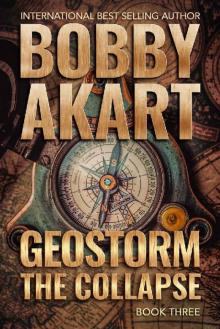 Geostorm The Collapse: A Post Apocalyptic EMP Survival Thriller (The Geostorm Series Book 3)
Geostorm The Collapse: A Post Apocalyptic EMP Survival Thriller (The Geostorm Series Book 3)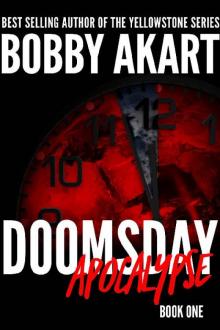 Doomsday Apocalypse
Doomsday Apocalypse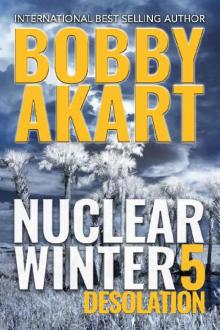 Nuclear Winter Desolation: Post Apocalyptic Survival Thriller (Nuclear Winter Series Book 5)
Nuclear Winter Desolation: Post Apocalyptic Survival Thriller (Nuclear Winter Series Book 5)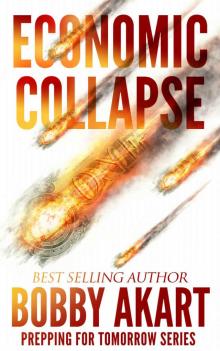 Economic Collapse (Prepping for Tomorrow Book 2)
Economic Collapse (Prepping for Tomorrow Book 2)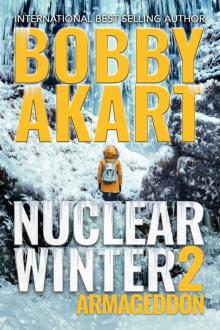 Nuclear Winter Armageddon
Nuclear Winter Armageddon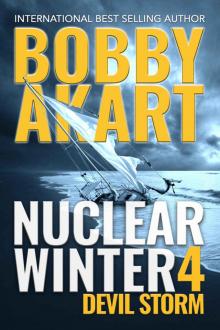 Nuclear Winter Devil Storm
Nuclear Winter Devil Storm Virus Hunters 3: A Medical Thriller
Virus Hunters 3: A Medical Thriller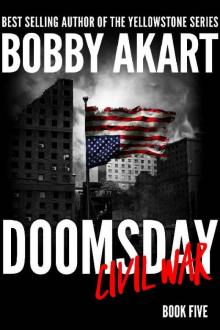 Doomsday Civil War: A Post-Apocalyptic Survival Thriller (The Doomsday Series Book 5)
Doomsday Civil War: A Post-Apocalyptic Survival Thriller (The Doomsday Series Book 5) Asteroid Destruction
Asteroid Destruction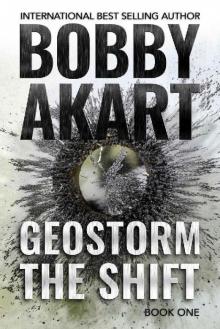 Geostorm the Shift
Geostorm the Shift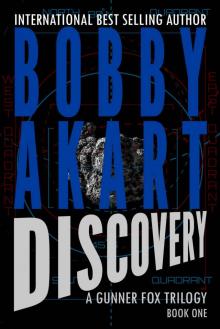 Asteroid Discovery
Asteroid Discovery Virus Hunters 2: A Medical Thriller
Virus Hunters 2: A Medical Thriller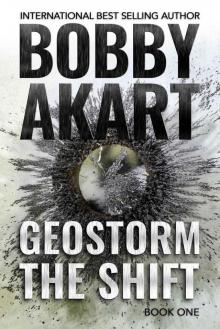 Geostorm The Shift: A Post-Apocalyptic EMP Survival Thriller (The Geostorm Series Book 1)
Geostorm The Shift: A Post-Apocalyptic EMP Survival Thriller (The Geostorm Series Book 1) Asteroid Diversion
Asteroid Diversion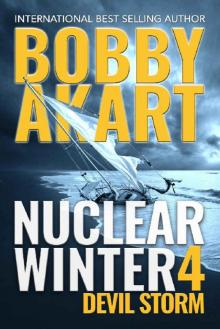 Nuclear Winter Devil Storm: Post Apocalyptic Survival Thriller (Nuclear Winter Series Book 4)
Nuclear Winter Devil Storm: Post Apocalyptic Survival Thriller (Nuclear Winter Series Book 4)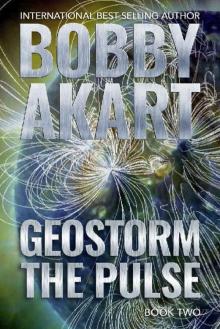 Geostorm The Pulse: A Post Apocalyptic EMP Survival Thriller (The Geostorm Series Book 2)
Geostorm The Pulse: A Post Apocalyptic EMP Survival Thriller (The Geostorm Series Book 2) Yellowstone: Survival: A Post-Apocalyptic Survival Thriller (The Yellowstone Series Book 4)
Yellowstone: Survival: A Post-Apocalyptic Survival Thriller (The Yellowstone Series Book 4) Nuclear Winter First Strike: Post-Apocalyptic Survival Thriller
Nuclear Winter First Strike: Post-Apocalyptic Survival Thriller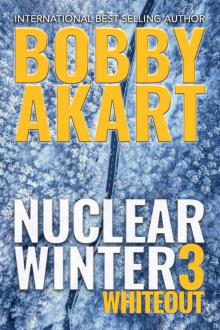 Nuclear Winter Whiteout
Nuclear Winter Whiteout Doomsday Anarchy
Doomsday Anarchy Pandemic: Level 6: A Post Apocalyptic Medical Thriller Fiction Series (The Pandemic Series Book 3)
Pandemic: Level 6: A Post Apocalyptic Medical Thriller Fiction Series (The Pandemic Series Book 3) Martial Law
Martial Law Odessa Reborn: A Terrorism Thriller (Gunner Fox Book 4)
Odessa Reborn: A Terrorism Thriller (Gunner Fox Book 4)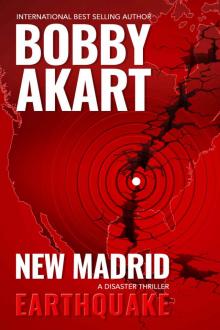 New Madrid Earthquake
New Madrid Earthquake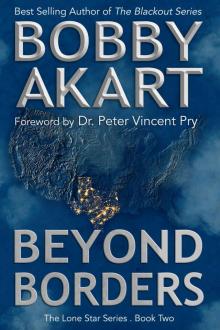 Beyond Borders: Post Apocalyptic EMP Survival Fiction (The Lone Star Series Book 2)
Beyond Borders: Post Apocalyptic EMP Survival Fiction (The Lone Star Series Book 2) The Blackout Series (Book 3): Turning Point
The Blackout Series (Book 3): Turning Point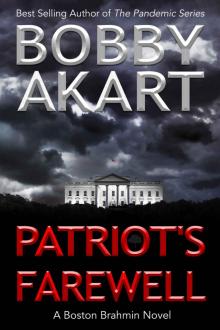 Patriot's Farewell: A Political Thriller Fiction Series (Boston Brahmin Political Thrillers Book 7)
Patriot's Farewell: A Political Thriller Fiction Series (Boston Brahmin Political Thrillers Book 7)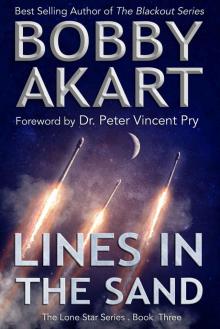 Lines in the Sand_Post Apocalyptic EMP Survival Fiction
Lines in the Sand_Post Apocalyptic EMP Survival Fiction The Mechanics: A Post-Apocalyptic Fiction Series
The Mechanics: A Post-Apocalyptic Fiction Series The Loyal Nine
The Loyal Nine Axis of Evil
Axis of Evil Axis of Evil: Post Apocalyptic EMP Survival Fiction (The Lone Star Series Book 1)
Axis of Evil: Post Apocalyptic EMP Survival Fiction (The Lone Star Series Book 1)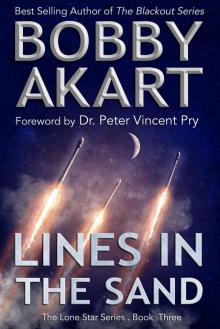 Lines in the Sand: Post Apocalyptic EMP Survival Fiction (The Lone Star Series Book 3)
Lines in the Sand: Post Apocalyptic EMP Survival Fiction (The Lone Star Series Book 3) Odessa Strikes
Odessa Strikes The Blackout Series (Book 4): Shiloh Ranch
The Blackout Series (Book 4): Shiloh Ranch Hornet's Nest: A Post Apocalyptic EMP Survival Fiction Series (The Blackout Series Book 5)
Hornet's Nest: A Post Apocalyptic EMP Survival Fiction Series (The Blackout Series Book 5) Yellowstone: Fallout: A Post-Apocalyptic Survival Thriller (The Yellowstone Series Book 3)
Yellowstone: Fallout: A Post-Apocalyptic Survival Thriller (The Yellowstone Series Book 3)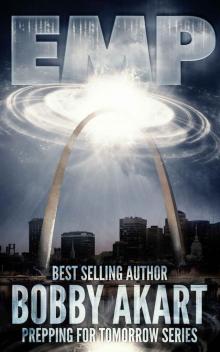 Electromagnetic Pulse
Electromagnetic Pulse Texas Strong: Post Apocalyptic EMP Survival Fiction (The Lone Star Series Book 4)
Texas Strong: Post Apocalyptic EMP Survival Fiction (The Lone Star Series Book 4) Fifth Column_Post Apocalyptic EMP Survival Fiction
Fifth Column_Post Apocalyptic EMP Survival Fiction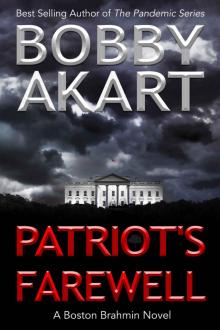 Patriot's Farewell
Patriot's Farewell Texas Strong_Post Apocalyptic EMP Survival Fiction
Texas Strong_Post Apocalyptic EMP Survival Fiction Pandemic: The Innocents: A Post-Apocalyptic Medical Thriller Fiction Series (The Pandemic Series Book 2)
Pandemic: The Innocents: A Post-Apocalyptic Medical Thriller Fiction Series (The Pandemic Series Book 2) Shiloh Ranch: A Post Apocalyptic EMP Survival Fiction Series (The Blackout Series Book 4)
Shiloh Ranch: A Post Apocalyptic EMP Survival Fiction Series (The Blackout Series Book 4) Cyber Attack
Cyber Attack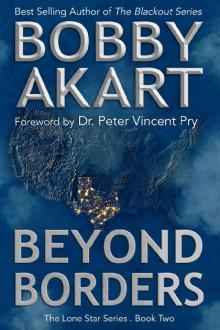 Beyond Borders
Beyond Borders Choose Freedom: A Post-Apocalyptic Fiction Series (The Boston Brahmin Book 6)
Choose Freedom: A Post-Apocalyptic Fiction Series (The Boston Brahmin Book 6) False Flag
False Flag Turning Point: A Post Apocalyptic EMP Survival Fiction Series (The Blackout Series Book 3)
Turning Point: A Post Apocalyptic EMP Survival Fiction Series (The Blackout Series Book 3) Nuclear Winter First Strike
Nuclear Winter First Strike Pandemic: Beginnings: A Post-Apocalyptic Medical Thriller Fiction Series (The Pandemic Series Book 1)
Pandemic: Beginnings: A Post-Apocalyptic Medical Thriller Fiction Series (The Pandemic Series Book 1) Devil's Homecoming: A Post Apocalyptic EMP Survival Fiction Series (The Blackout Series Book 6)
Devil's Homecoming: A Post Apocalyptic EMP Survival Fiction Series (The Blackout Series Book 6) The Blackout Series (Book 6): Devil's Homecoming
The Blackout Series (Book 6): Devil's Homecoming Yellowstone: Inferno: A Post-Apocalyptic Survival Thriller (The Yellowstone Series Book 2)
Yellowstone: Inferno: A Post-Apocalyptic Survival Thriller (The Yellowstone Series Book 2) Fifth Column: Post Apocalyptic EMP Survival Fiction (The Lone Star Series Book 5)
Fifth Column: Post Apocalyptic EMP Survival Fiction (The Lone Star Series Book 5) Yellowstone: Hellfire: A Post-Apocalyptic Survival Thriller (The Yellowstone Series Book 1)
Yellowstone: Hellfire: A Post-Apocalyptic Survival Thriller (The Yellowstone Series Book 1) The Blackout Series (Book 2): Zero Hour
The Blackout Series (Book 2): Zero Hour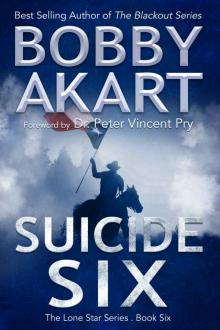 Suicide Six: Post Apocalyptic EMP Survival Fiction (The Lone Star Series Book 6)
Suicide Six: Post Apocalyptic EMP Survival Fiction (The Lone Star Series Book 6)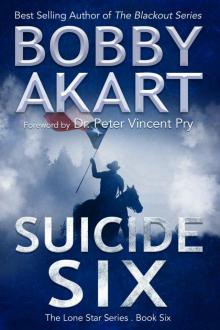 Suicide Six_Post Apocalyptic EMP Survival Fiction
Suicide Six_Post Apocalyptic EMP Survival Fiction Zero Hour: A Post-Apocalyptic EMP Survival Fiction Series (The Blackout Series Book 2)
Zero Hour: A Post-Apocalyptic EMP Survival Fiction Series (The Blackout Series Book 2)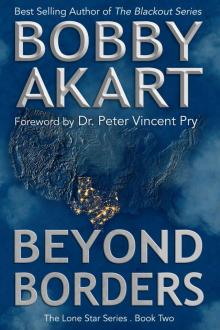 Beyond Borders_Post Apocalyptic EMP Survival Fiction
Beyond Borders_Post Apocalyptic EMP Survival Fiction Pandemic: Quietus: A Post-Apocalyptic Dystopian Fiction Series (The Pandemic Series Book 4)
Pandemic: Quietus: A Post-Apocalyptic Dystopian Fiction Series (The Pandemic Series Book 4)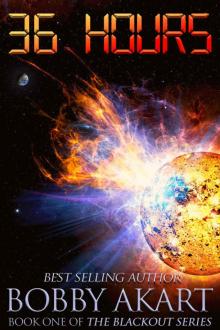 36 Hours: A Post-Apocalyptic EMP Survival Fiction Series
36 Hours: A Post-Apocalyptic EMP Survival Fiction Series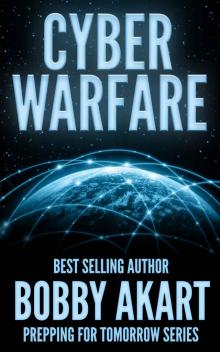 Cyber Warfare
Cyber Warfare